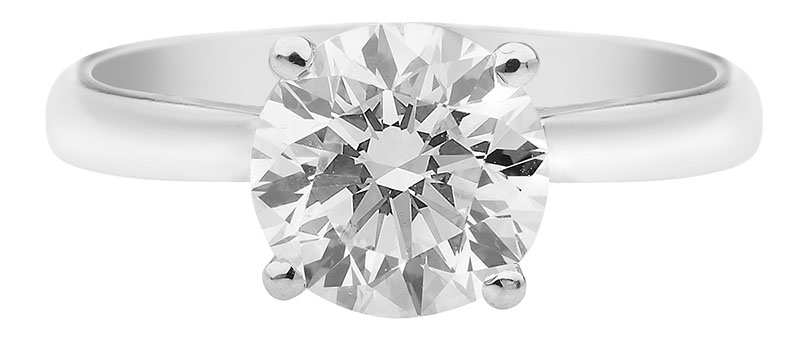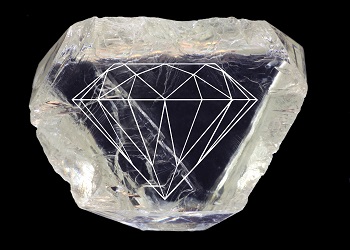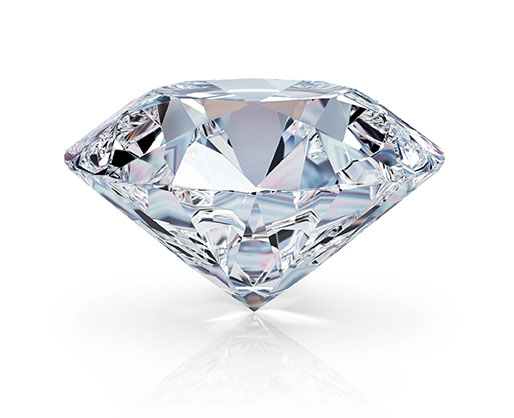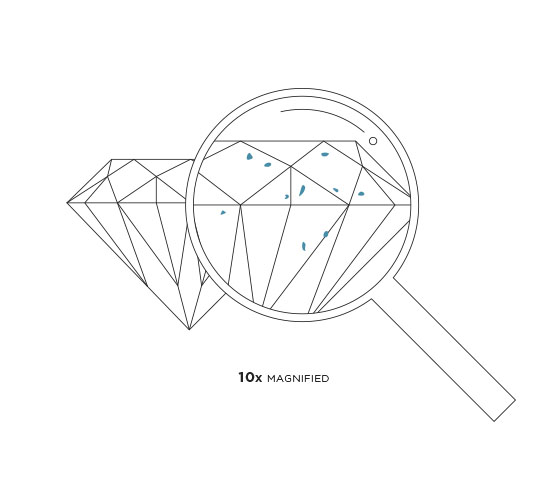Michalis Guide to Diamonds
In nature, there are no two identical diamonds.

During their crystallization deep within the earth, under extreme heat and pressure, natural diamonds acquire birthmark characteristics from minerals and chemicals of the surrounding environment. The pattern of these characteristics identifies like DNA the uniqueness of every diamond.
The 4C’s

Cut
The allure and beauty of a particular diamond depend more on cut quality than anything else. A diamond that has been well cut may be given a higher quality or value than one that is larger or of a better color.
A diamond’s cut refers to the quality of the tiny surfaces, or facets. Cut, the only element of the 4Cs influenced by the human hand, is the most important factor that determines a diamond’s brilliance.


A rough diamond looks like small, irregular glass smeared with oil, until it is precisely cut and polished by an experienced cutter.
In the hands of master diamantaires, rough diamonds are transformed into beautiful gems sparkling with brilliance.
An expertly-cut diamond reflects light internally from one mirror-like facet to another and disperses it through the top of the gem, as spectacular brilliance.

Cut quality is the factor that fuels a diamond’s fire, sparkle and brilliance.
Βrightness (the total light reflected from a diamond).
Fire (the dispersion of light into the colors of the spectrum).
Scintillation (the pattern of light and dark areas and the flashes of light, or sparkle, when a diamond is moved).
Brilliance versus Carat Weight
To achieve the maximum possible brilliance, much more of a rough diamond’s weight must be sacrificed.

Too-Shallow
If the diamond is cut too shallow, it will appear opaque as light will escape downwards
Optimal-Cut
A well-cut diamond is properly proportioned . It catches, transmits and reflects light back to the eye, as an explosion of fire and sparkle.
Too-Deep
If the diamond is cut too deep, it will face up smaller and display a black center, as light will be absorbed inside the stone.
The GIA scale for cuts moves from Excellent to Poor.
At Michalis, we never sacrifice beauty for weight. Our diamonds fall within “excellent “ and “Good”, so that an extraordinary brilliance and scintillation is noticed, even in a crowded room.
Carat
Carat is the unit of measurement of diamond weight. Carat weight taken by itself alone is a poor indicator of beauty and value since it is the complex combination of all the factors that determines a diamond’s beauty and quality.
Two one carat stones can vary greatly in price and beauty. Diamonds selected by Michalis , are always cut to maximize brilliance, not carat weight.

Clarity

The position, size, number and type of these birthmark characteristics when viewed under 10-power magnification, identify the clarity grade of a diamond. The GIA clarity scale which ranges from IF to I3.
As a general rule, a Michalis diamond must be rated VS2 or better (Very Small Inclusions), meaning that no inclusion is visible to the naked eye.

Color
Truly colorless diamonds are extremely rare. Even though diamonds may appear colorless to the inexperienced eye, minor trace minerals trapped within their crystalline substance during their formation, create subtle tints of color. These subtle differences are graded on the GIA colour scale from D (colourless) to Z (light yellow).
As a general rule, a Michalis diamond must be rated H or better.

Fluoresence-Transparency
Some diamonds – even when they have good clarity-appear milky or cloudy when observed under natural or incandescent light. At Michalis all milky diamonds are rejected.
Diamond shapes
The brilliant round cut diamond has long been the most popular shape. All alternative shapes, heart, princess, emerald, marquise, among others, are called fancy cut shapes. Since each diamond shape is cut to different specifications, they reflect light differently, giving each shape a unique fire and brilliance. At Michalis, we offer a large selection of fancy cut shapes. Visit us and chose a high quality diamond of your personal taste and style.

